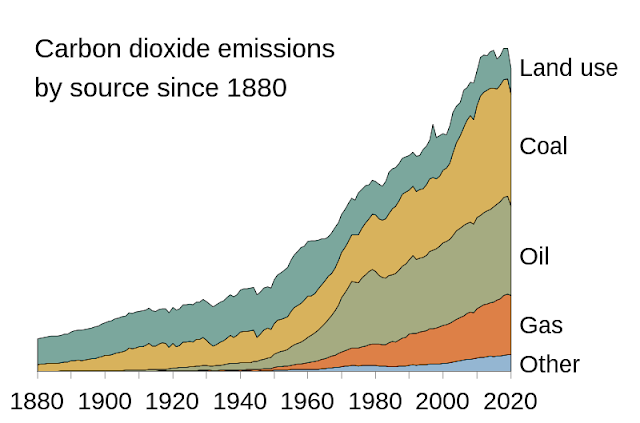The Industrial Revolution was the decades-long period, beginning in England in roughly 1760 and lasting until about 1840 when mechanized production replaced hand manufacture across a wide range of manufacturing and production processes. In climate studies, the “pre-industrial era” refers to geological and historical records up to 1750, marking the approximate time when anthropogenic carbon dioxide emissions became measurable in climate proxy records.
UK coal production and imports, 1750-2020.
Examinations into the causes of the Industrial Revolution, including entire books, spend exhaustive attention on international trade and improved education as causes for generally increased wealth, productivity and innovation. But the clear and obvious cause was innovation in production and use of coal, which led to or aided in nearly all the other increasingly rapid changes. Analogously to how the discoveries of bronze and iron radically transformed the stone-based societies around them, so coal had a fundamental effect on productivity and the society of England and the other countries which later came to use it.
UK GDP, 1270-2016.
It was the physical power of coal, a far denser source of energy than wood, which made possible the machines that multiplied the effectiveness of human workers and so hugely expanded productivity and transportation. From 1750 to 1850, annual coal production in England increased from 5 million to 71.5 million tons (more than a 1300% increase). During the same time, England’s GDP went from £11.3B to 51.53B (more than a 350% increase).
Global CO2 emissions since 1800, by fuel source.
While productivity soared in England at this time, the local environmental effects were frequently horrendous. Air and water pollution were commonplace in factory towns where coal smoke and industrial waste were emitted without concern, leading to . Beyond the local health issues caused by burning coal, was the beginning of global-scale carbon dioxide emissions. Of the estimated roughly 1.5 T tons of CO2 emitted globally during the industrial era (1750 on), despite its declining share, close to 40% has come from burning coal.
Tomorrow: introduction to Scotland.
Be brave, and be well.








No comments:
Post a Comment